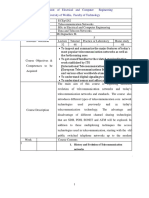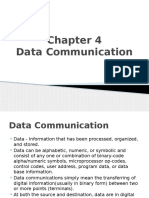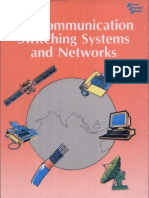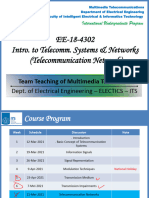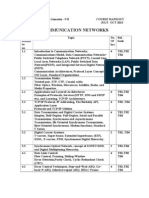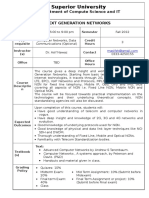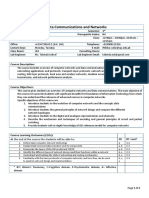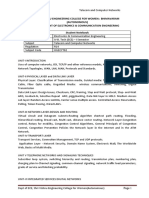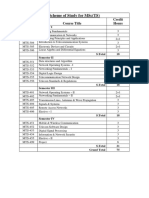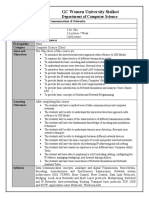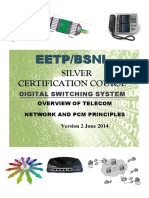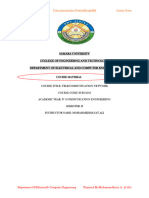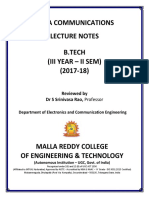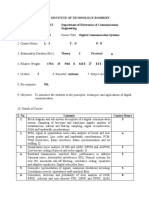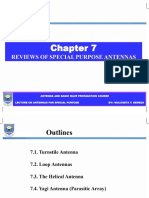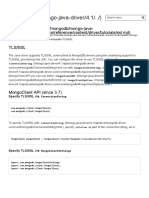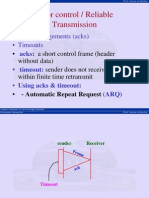0% found this document useful (0 votes)
272 views2 pagesTelecom Course Outline
This 5 ECTS credit course on Telecommunication Networks is offered by the Department of Electrical and Computer Engineering at Mizan Tepi University. The course objectives are to summarize features of modern telecommunication networks and standards, understand digital signaling techniques, and sensor/adhoc networks. Over 7 weeks, topics will include the history and evolution of telecom networks, digital transmission principles, networking fundamentals, technologies like SDH, PDH, SONET and ATM, and access methods including PSTN, DSL and wireless networks. Assessment includes quizzes, assignments, tests and a final exam. Students are expected to abide by the university code of conduct and attend 80% of classes.
Uploaded by
eyasu abebeCopyright
© © All Rights Reserved
We take content rights seriously. If you suspect this is your content, claim it here.
Available Formats
Download as PDF, TXT or read online on Scribd
0% found this document useful (0 votes)
272 views2 pagesTelecom Course Outline
This 5 ECTS credit course on Telecommunication Networks is offered by the Department of Electrical and Computer Engineering at Mizan Tepi University. The course objectives are to summarize features of modern telecommunication networks and standards, understand digital signaling techniques, and sensor/adhoc networks. Over 7 weeks, topics will include the history and evolution of telecom networks, digital transmission principles, networking fundamentals, technologies like SDH, PDH, SONET and ATM, and access methods including PSTN, DSL and wireless networks. Assessment includes quizzes, assignments, tests and a final exam. Students are expected to abide by the university code of conduct and attend 80% of classes.
Uploaded by
eyasu abebeCopyright
© © All Rights Reserved
We take content rights seriously. If you suspect this is your content, claim it here.
Available Formats
Download as PDF, TXT or read online on Scribd
/ 2
